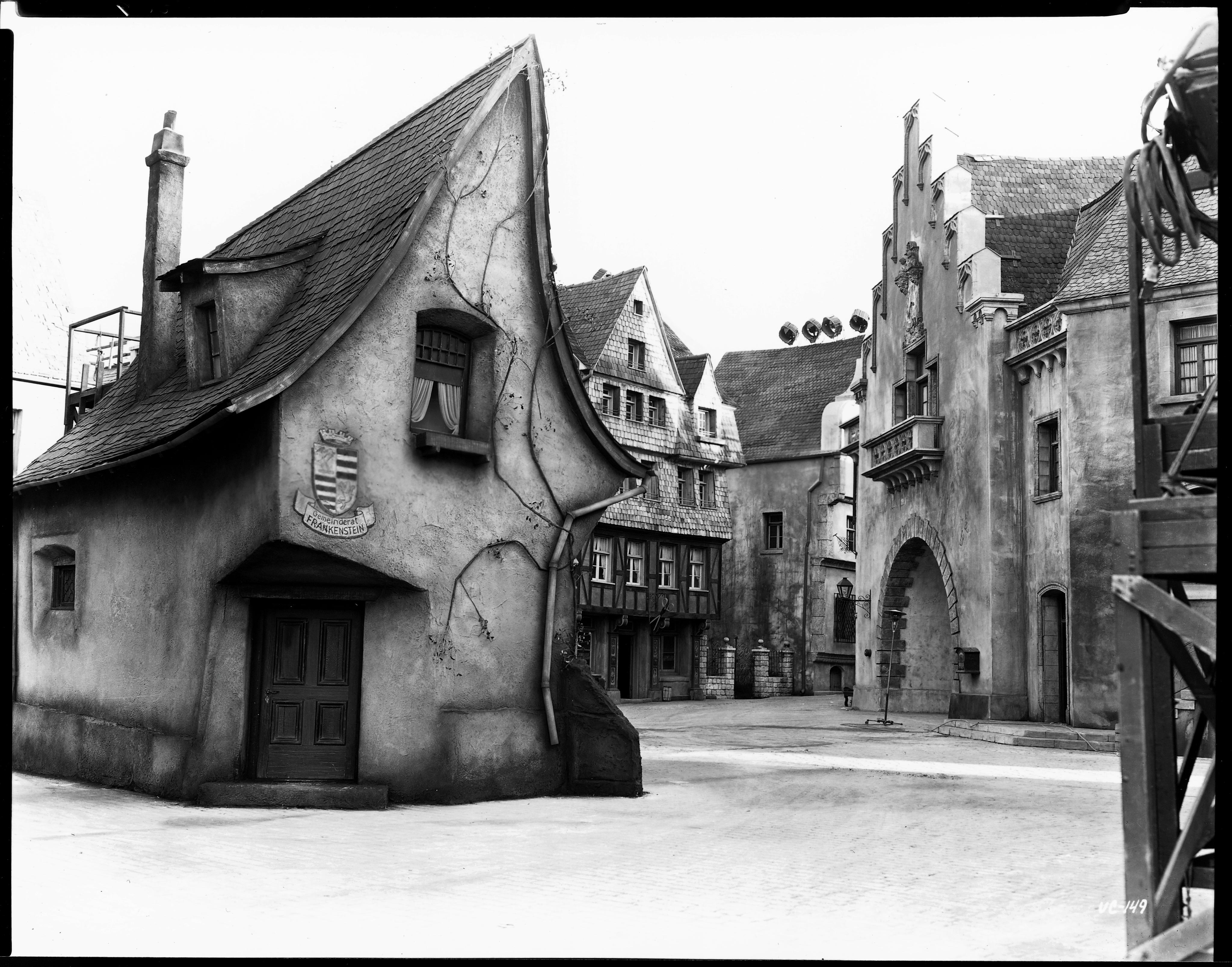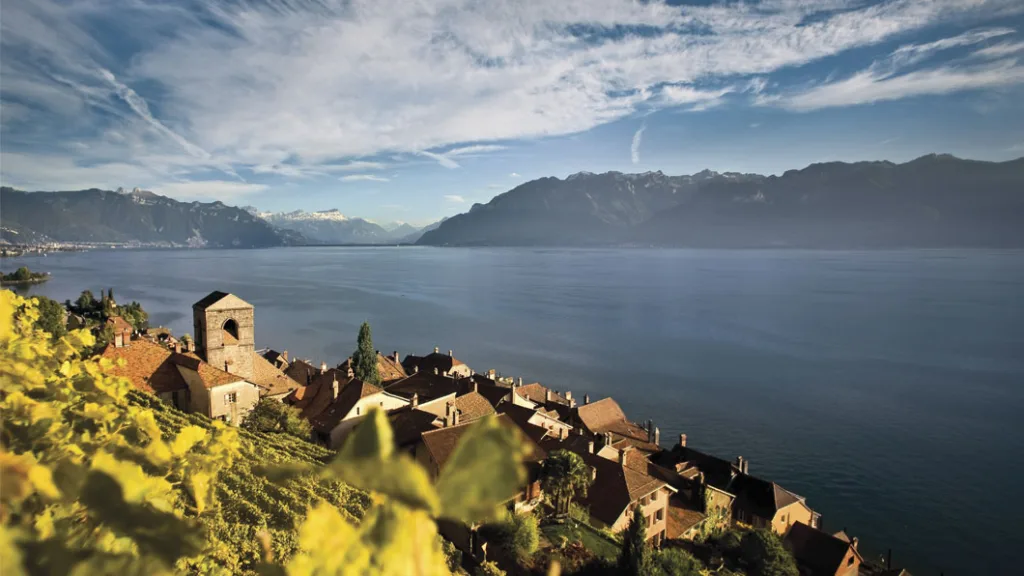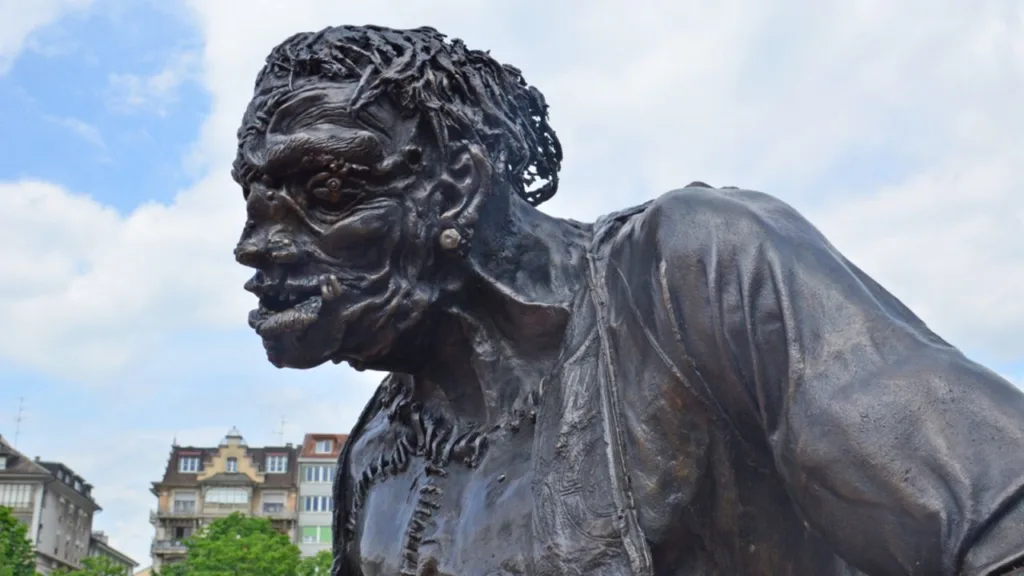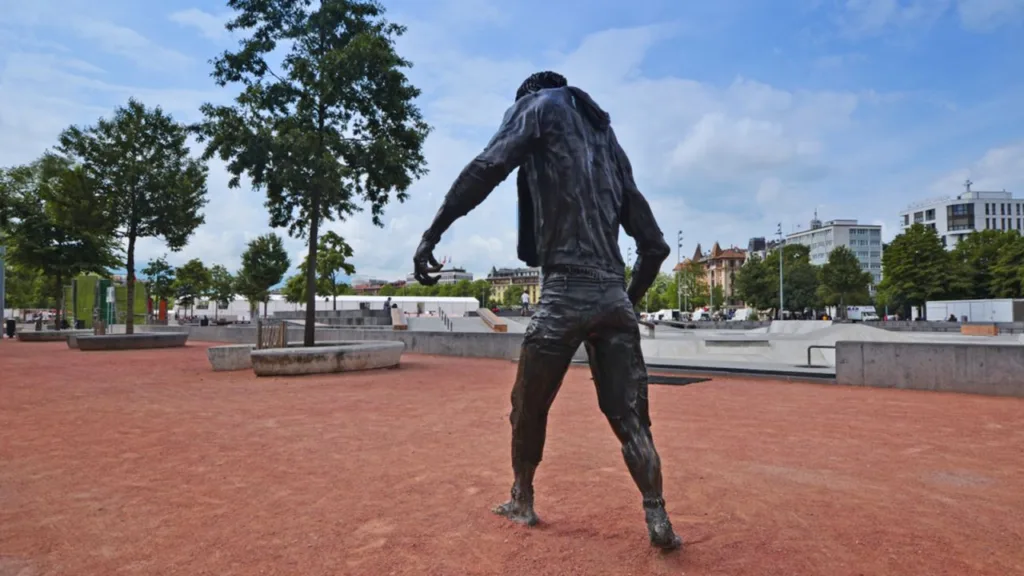Frankenstein is a novel that explores the battle between science and nature, and Mary Shelley uses setting to convey this conflict. The novel is set in four main locations: Geneva, Ingolstadt, Walton’s boat in the Arctic Ocean, and the home of the De Lacey family. In this blog post, we will take a closer look at each setting and how it contributes to the overall themes of the novel.
Geneva, Switzerland:
Geneva is the home of the Frankenstein family, whre Victor grew up and to which he returned after college and the creation of the monster. The murders of William and Justine were located in the area around Geneva. Shelley uses Geneva’s familiar beauty to represent the comfort and peacefulness of the natural world. However, Victor’s obsession with science and the desire to play God leads him to try and create life, ultimately leading to the destruction of his own family.
Ingolstadt, Germany:
Ingolstadt is the location of the university where Victor studied and where he created the monster. The setting of Ingolstadt is significant because it represents the scientific and rational world that Victor was immersed in. The university is described as cold and lifeless, and Victor’s experiments take place in a dark and dismal laboratory. This setting emphasizes the dangers of science without morality and highlights the theme of the dangers of playing God.
Walton’s boat in the Arctic Ocean:
The setting of the Arctic Ocean represents the isolation and loneliness that both Victor and the monster experience. Victor is pursuing the monster to exact revenge, while the monster is seeking his creator’s attention and acceptance. The harsh and unforgiving environment of the Arctic Ocean is symbolic of the emotional and psychological turmoil that both Victor and the monster face.
The home of the De Lacey family:
The setting of the De Lacey family’s home is significant because it represents the natural world and the power of human connection. The De Lacey family lives a simple life in harmony with nature, and the monster learns from them about the importance of human relationships. The setting of the De Lacey family’s home emphasizes the theme of the importance of community and the need for human connection.
Mary Shelley’s use of setting in Frankenstein is crucial to the overall themes of the novel. The settings of Geneva, Ingolstadt, Walton’s boat in the Arctic Ocean, and the home of the De Lacey family each contribute to the exploration of the battle between science and nature. Through her masterful use of setting, Shelley demonstrates that our environment powerfully shapes our inner selves and that where we are in the world is just as important as who we are.
The Setting of Frankenstein
The setting of the novel Frankenstein is primarily located in Geneva, Switzerland. Geneva is a city located in the western part of Switzerland, near the French border. It is known for its picturesque scenery, including Lake Geneva and the Swiss Alps.
The novel begins with Victor Frankenstein’s childhood in Geneva, where he was raised by his family. After completing his studies at the University of Ingolstadt, Victor returns to Geneva and begins his experiments with creating a human-like being. It is in Geneva where the tragic events of the novel occur, including the murders of William and Justine, which are located in the surrounding area.
Geneva serves as an important backdrop for the novel, as the city and its surroundings provide the setting for much of the action. The city is described in detail throughout the novel, with its natural beauty and architecture serving as both a contrast to and a reflection of the dark events that take place there.
In addition to Geneva, the novel also takes place in various oter locations, including Ingolstadt, where Victor attends university, and the Arctic, where he pursues the monster in an attempt to destroy him. However, it is Geneva that serves as the primary setting and provides the backdrop for the majority of the events that take place in the novel.
The setting for Frankenstein is primarily located in Geneva, Switzerland. The city serves as an important backdrop for the novel, providing both a contrast to and a reflection of the dark events that occur there.

Source: mobile.twitter.com
The Setting of Frankenstein
Frankenstein, the famous novel by Mary Shelley, is set in multiple locations, each with its unique characteristics and significance to the story. The four main settings in the novel are Geneva, Ingolstadt, Walton’s boat in the Arctic Ocean, and the home of the De Lacey family.
Geneva is the birthplace of Victor Frankenstein and represents for him the comfort and peacefulness of the natural world. The familiar beauty of the place is described in detail in the novel, with its majestic mountains, clear lakes, and green meadows. This setting is significant as it foreshadows the themes of nature and creation that run troughout the novel.
Ingolstadt, on the other hand, is the place where Victor Frankenstein attends the university and creates his infamous monster. The city is described as a dreary and gloomy place, with its narrow streets and dark alleys. This setting is significant as it reflects the darkness and despair that Victor experiences as he delves deeper into his obsession with creating life.
Walton’s boat in the Arctic Ocean is where the novel’s frame story takes place. The setting is described as a desolate and treacherous place, with its freezing temperatures, icy waters, and monster-infested terrain. This setting is significant as it creates a sense of isolation and danger, both for Walton and his crew and for Victor and his monster.
The home of the De Lacey family is a peaceful and idyllic setting, where the monster seeks refuge and learns about human life. The cottage is described as a cozy and warm place, with its rustic furniture and simple decor. This setting is significant as it contrasts sharply with the darkness and despair of the other settings in the novel, highlighting the potential for goodness and love in the world.
The settings in Frankenstein are diverse and significant, each reflecting different themes and emotions in the novel. From the natural beauty of Geneva to the desolate Arctic Ocean, the settings add depth and complexity to the story, making it a classic of gothic literature.
The Importance of Setting in Frankenstein
The setting is a crucial element in Mary Shelley’s Frankenstein as it serves as a backdrop for the themes of the novel. The usage of the setting plays a crucial role in exploring the battle between science and nature. Shelley was a leading figure in the Romantic Movement, and her work emphasizes the belief that the environment shapes our inner selves.
The setting of the novel is primarily in the Swiss Alps, a region known for its natural beauty and rugged terrain. Shelley uses the setting to contrast the beauty of nature with the unnatural and grotesque creation of Victor Frankenstein, highlighting the tension between science and nature.
Furthermore, Shelley uses the setting to convey the isolation and loneliness experienced by the characters. Victor’s laboratory, located in an isolated part of the university, is a symbol of his separation from society and the natural world. The Arctic setting at the end of the novel is also used to convey the sense of isolation and despair felt by both the monster and Victor.
Moreover, the setting of the novel also reflects the societal chages of the time. The Industrial Revolution was transforming the landscape of England, and Shelley’s use of the natural setting can be seen as a reaction against the destruction of nature caused by industrialization.
The setting in Frankenstein is of immense importance, serving as a metaphor for the themes of the novel. Shelley’s use of the setting emphasizes the tension between science and nature, highlights the isolation and loneliness experienced by the characters and reflects the societal changes of the time.
The First Setting of Frankenstein
The first setting of Frankenstein, the renowned novel written by Mary Shelley, is Switzerland. The novel primarily unfolds in this country, which is located in central Europe. Mary Shelley started writing this novel while staying in Switzerland, which is why the country features prominently in the story. The novel’s protagonist, Victor Frankenstein, is a Swiss scientist who creates a monstrous being through an experiment. While the story primarily takes place in Switzerland, it also spans across the globe as Frankenstein travels to Germany, France, England, and Scotland.

Is Frankenstein Set in London?
Frankenstein is not exclusively set in London. The novel is set in various locations across Europe during the late 18th century, including England, Ireland, Italy, France, Scotland, Switzerland, Russia, and Germany. Mary Shelley, the author of Frankenstein, drew inspiration from her travels and experiences throughout Europe. The first edition of the novel was published anonymously in London on 1 January 1818, when Shelley was 20 years old. While London is not the sole setting of the novel, it does play a role in the story as the location where the creature is brought to life by Victor Frankenstein.
The Setting of the End of Frankenstein
At the end of Mary Shelley’s novel “Frankenstein,” the setting is a hut located on the slopes of Montanvert in the Swiss Alps. The scene takes place after the confrontation between Victor Frankenstein and his creation, the monster. The hut serves as a temporary refuge for the two characters during their conversation.
Montanvert is a mountain located in the Canton of Bern, Switzerland, and is known for its stunning views of the surrounding area. The location is significant in the novel as it is where Victor first encounters his creation after abandoning him. The mountain serves as a symbol of the isolation and loneliness that both characters experience throughout the story.
The hut itsef is described as “a small straw-built habitation” that provides shelter for the characters. It is a simple and rustic structure, in contrast to the grand and elaborate settings that are present earlier in the novel. The simplicity of the hut emphasizes the stripped-down nature of the scene and the raw emotions that the characters are experiencing.
The setting at the end of “Frankenstein” is a hut located on the slopes of Montanvert in the Swiss Alps. The scene takes place after the confrontation between Victor and his creation and is significant in its simplicity and symbolism.
The Location of Frankenstein
Frankenstein Village is located in Switzerland, near the town of Reigelberg. The village is situated in a picturesque area and is known for its stunning natural beauty. It takes about three days to reach the village by horse from the nearby village of Vasaria. The village is named after the Frankenstein family, who have maintained a strong presence in the region for over seven-hundred years.
The village is a popular tourist destination, and visitors can enjoy a range of activities such as hiking, skiing, and horseback riding. The village is also known for its historic architecture, with many buildings dating back several centuries.
If you are planning a visit to Frankenstein Village, there are several accommodation options available, including hotels, guesthouses, and vacation rentals. Additionally, the village has several restaurants and cafes were visitors can enjoy traditional Swiss cuisine.
Frankenstein Village is a beautiful and historic village located in Switzerland near Reigelberg. It is a popular tourist destination known for its stunning natural beauty, historic architecture, and outdoor activities.
Is Frankenstein a Real Location?
Frankenstein is not a real place, at least not in the sense that it is a physical location that exists in the world. It is a fictional place that was created by Mary Shelley for her novel Frankenstein; or, The Modern Prometheus. The story of Frankenstein is set in several different locations, including Geneva, Ingolstadt, and the Swiss Alps, but there is no mention of a place called Frankenstein in the novel.
Despite the fact that Frankenstein is not a real place, it has become a popular cultural reference and has been used in various ways in popular culture. For example, there are several real castles in Germany that are known as “Frankenstein Castle” or “Castle Frankenstein” because they are believed to have inspired Shelley’s novel. These castles are located in the Odenwald region of Germany and date back to the 13th century. However, they have no direct connection to the story of Frankenstein and are simply named after the village of Frankenstein, wich is located nearby.
In addition to the real castles in Germany, there are also several fictional depictions of Castle Frankenstein in movies, TV shows, and other forms of media. These depictions vary widely, but they all share the common theme of being a spooky, gothic castle where the mad scientist Victor Frankenstein conducts his experiments and creates his monster.
While Frankenstein is not a real place, it has become an important part of popular culture and has inspired countless adaptations, spin-offs, and retellings of the original story. Whether you are a fan of the original novel or simply enjoy the many movies and TV shows that have been inspired by it, Frankenstein is sure to remain a cultural touchstone for many years to come.

Gothic Elements in the Setting of Frankenstein
The setting in Frankenstein contains several elements that can be considered Gothic. Firstly, the story is set in dark and dreary places such as graveyards, ruined castles, and isolated laboratories. These locations reflect the Gothic tradition of using eerie and ominous settings to create an atmosphere of fear and suspense.
Secondly, the setting includes a sense of isolation and loneliness that contributes to the Gothic tone of the novel. The protagonist, Victor Frankenstein, is consumed by his obsession with creating life and becoms increasingly isolated from his family and friends. This theme of alienation is a common Gothic element that emphasizes the psychological isolation of the characters.
Thirdly, the setting in Frankenstein also includes elements of the supernatural. For example, the creation of the monster and the reanimation of corpses are both supernatural events that are outside the realm of normal human experience. These supernatural elements contribute to the Gothic atmosphere of the novel by creating a sense of horror and the unknown.
The setting in Frankenstein is Gothic due to its use of dark and dreary locations, a sense of isolation and loneliness, and elements of the supernatural. These Gothic elements create an atmosphere of fear and suspense that contributes to the overall tone of the novel.
The Symbolism of Mountains in Frankenstein
In Mary Shelley’s noel Frankenstein, the mountains serve as a significant symbol throughout the story. The mountains are used to represent various themes and ideas that are present in the novel.
Firstly, the mountains symbolize the grandeur and majesty of nature. Shelley uses the mountains to emphasize the power and beauty of the natural world, which are often contrasted with the destructive and arrogant actions of the human characters in the story. The mountains serve as a reminder of the awe-inspiring forces of nature that are beyond human control.
Secondly, the mountains also represent the isolation and despair that many of the characters feel throughout the story. Victor Frankenstein, the protagonist, often seeks solace in the mountains, where he can be alone with his thoughts and emotions. The isolation that he experiences in the mountains is a reflection of the emotional and psychological isolation he feels as he becomes more obsessed with his scientific pursuits.
The mountains also serve as a symbol of the dangers of ambition and the consequences of playing God. Victor’s journey to the top of the mountain in pursuit of his scientific goals is a metaphor for his reckless pursuit of knowledge and power. The dangers and risks associated with his pursuit are symbolized by the treacherous terrain and harsh conditions of the mountains.
The mountains in Frankenstein serve as a powerful symbol that represents various themes and ideas in the novel. From the power of nature to the dangers of ambition, the mountains are an integral part of the story’s symbolism and meaning.
Is Frankenstein Set in Ireland?
Frankenstein is not entirely set in Ireland, but the country plays a significant role in the novel. The story begins in Geneva, Switzerland, whre Victor Frankenstein is born and raised. However, after Victor creates his monster and it begins to wreak havoc, he flees to England and eventually to Scotland, where he pursues the creature.
It is during this pursuit that Victor travels to Ireland. While there, he meets a young boy named William, whom the monster has murdered. Victor also encounters a young woman named Justine, who is later falsely accused and executed for the murder. Ireland serves as a pivotal location in the novel, as it is where Victor discovers the true nature of his creation’s evil deeds.
Despite its importance to the plot, Ireland is not a setting that Victor deliberately chooses. Rather, it is a place of coincidence and happenstance. This is in contrast to other locations in the novel, such as Geneva and Ingolstadt, which hold significant personal meaning for Victor.
While Frankenstein is not set entirely in Ireland, the country plays a crucial role in the development of the story and the character of Victor Frankenstein.
The Importance of Setting in a Story
The setting of a story refers to the physical location, time period, and social context in which the events of the story take place. It can encompass a wide range of elements, including the weather, landscape, architecture, technology, culture, and historical events of the time period.
The setting is important to the story for several reasons. Firstly, it provides the reader with a sense of context, helping them to understand the characters and their motivations. For example, if a story is set in a particular historical period, the reader may be able to infer certain tings about the characters based on their clothing, language, or social status.
Secondly, the setting can help to create a particular mood or atmosphere. For example, a story set in a gloomy, rain-soaked city might have a very different tone than one set in a sunny, idyllic countryside.
The setting can be used to advance the plot of the story. For example, if a story is set in a remote, isolated location, the characters may be forced to confront certain challenges or obstacles that they would not encounter in a more urban setting.
The setting is a crucial element of any story, as it helps to ground the reader in the world of the story and provides important context and atmosphere.

Exploring the Significance of the Arctic Setting in Mary Shelley’s Frankenstein
Mary Shelley’s novel, Frankenstein, is set in the Arctic for seveal reasons. Firstly, the Arctic is a desolate and isolated place, which mirrors the emotional state of the protagonist, Victor Frankenstein’s creation. The monster is alone and confused, and the Arctic serves as a physical representation of his internal turmoil.
Secondly, the Arctic is a place of extreme conditions, with harsh weather, ice, and snow. These conditions symbolize the emotional pain and suffering that the monster experiences throughout the novel. The extreme weather also adds to the sense of danger and tension in the story, as the characters struggle to survive in such a hostile environment.
Thirdly, the Arctic represents the limits of human knowledge and understanding. Victor Frankenstein’s obsession with creating life leads him to push the boundaries of science and ethics. The Arctic setting emphasizes the dangers of such experimentation and the consequences of playing God.
The Arctic provides a sense of mystery and intrigue to the story. It is a place that is largely unknown and unexplored, which adds to the sense of adventure and discovery in the novel.
The Arctic setting in Frankenstein serves as a powerful symbol for the emotional state of the characters, the limits of human knowledge, and the dangers of playing God. It adds to the sense of danger, mystery, and adventure in the novel, and helps to create a rich and complex narrative that continues to captivate readers to this day.
The Impact of Setting on the Creature in Frankenstein
The setting in Frankenstein plays a critical role in the development of the creature. The menacing and dark atmosphere of the overall setting creates a sense of isolation and abandonment for the creature. However, when he is close to nature, he is able to develop human-like traits and becme more sensitive. The creature’s interaction with the wild world reveals his better side and nature’s greatness turns the heartless monster into a compassionate being.
The creature’s abandonment and isolation from society are evident in the setting of Frankenstein. He is created in a dark laboratory, far away from the warmth of the sun and the beauty of nature. The laboratory is a cold and sterile environment, which creates a sense of detachment and loneliness. The creature is immediately rejected by his creator, Frankenstein, and is left to fend for himself in an unforgiving world.
However, when the creature ventures into the natural world, his character begins to change. He becomes more sensitive and compassionate. The creature is fascinated by the beauty of nature, and it brings out his better side. The setting of the natural world provides the creature with a sense of belonging and purpose.
Moreover, the creature’s interaction with the natural world is the key to unlocking his humanity. He develops empathy, compassion, and a sense of morality. The creature’s transformation is apparent when he saves a young girl from drowning. He proves himself to be a hero, which is a stark contrast to his earlier actions of violence and destruction.
The setting plays a crucial role in the development of the creature in Frankenstein. The dark and menacing environment of the laboratory creates a sense of isolation and abandonment, while the natural world brings out the creature’s better side. The creature’s interaction with nature reveals his humanity, and he becomes a more compassionate and sensitive being.
Conclusion
The settings in Mary Shelley’s Frankenstein play a significant role in the development of the story and characters. Geneva represents the comfort and peacefulness of nature, while Ingolstadt symbolizes the pursuit of knowledge and scientific experimentation. Walton’s boat in the Arctic Ocean represents the danger and isolation of the unknown, while the home of the De Lacey family represents the beauty and simplicity of life. The 18th century setting of the novel also reflects the era of enlightenment and romanticism, emphasizing the battle between science and nature. Through the use of setting, Shelley explores how our environment shapes our iner selves and the consequences of our actions. The settings in Frankenstein serve as a reminder of the power and importance of our surroundings in shaping who we are.
